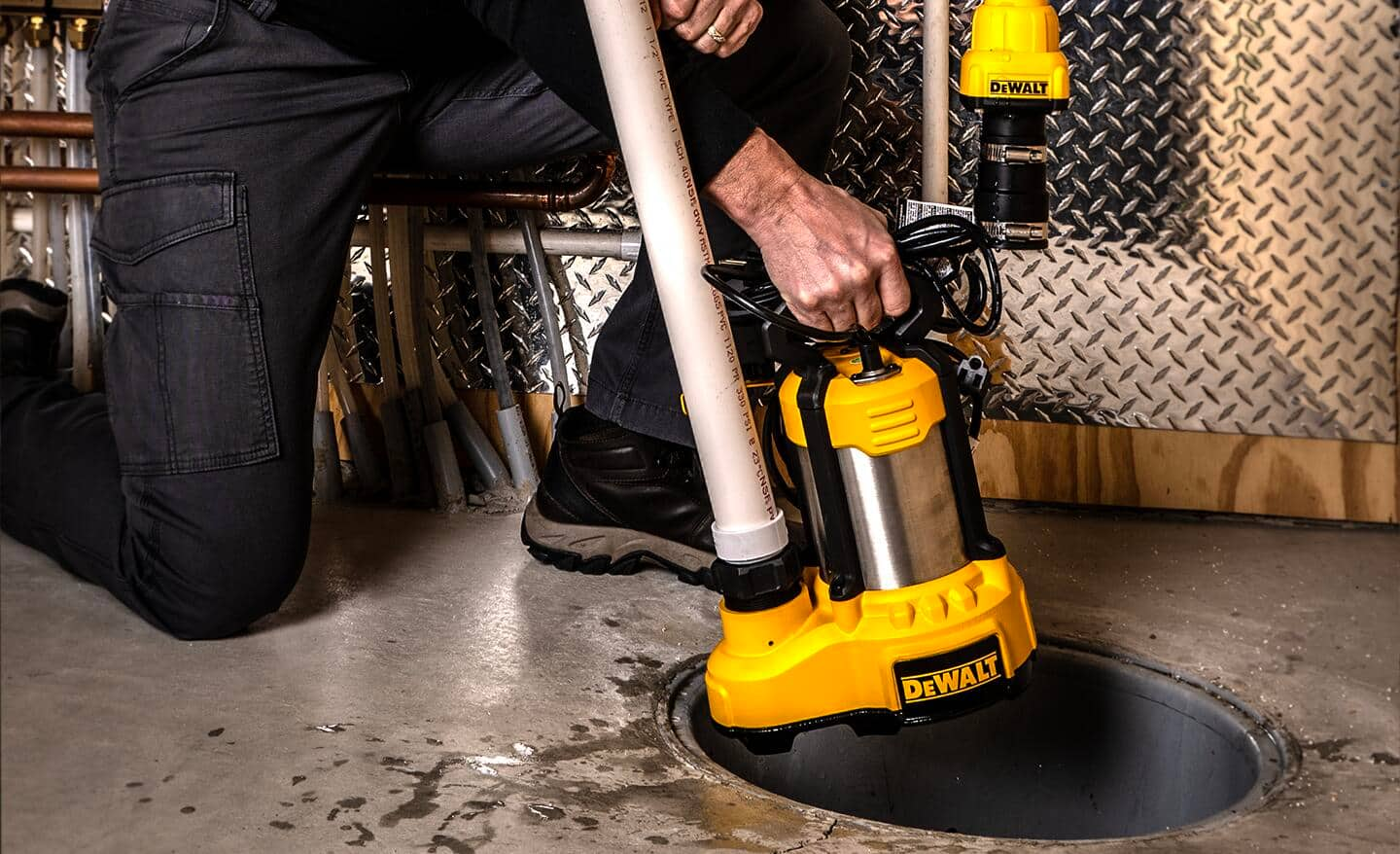Highly-Rated Techniques for Caring for a Sump Pump
Highly-Rated Techniques for Caring for a Sump Pump
Blog Article
What're your opinions on Steps to Cleaning Your Sump Pump Properly?

Sump pumps are vital parts in several homes, specifically in areas vulnerable to flooding or excessive wetness. They assist protect against water damage by efficiently getting rid of excess water from cellars or crawl spaces. Nonetheless, like any other appliance, sump pumps call for routine maintenance to ensure they function successfully when needed one of the most. Cleansing your sump pump is an essential part of its maintenance, and comprehending just how to do it effectively can save you from pricey fixings and prospective calamities.
Introduction
Keeping a clean sump pump is essential for its correct functioning and durability. Ignoring this important job can lead to obstructions, breakdowns, and eventually, water damage to your home. For that reason, learning how to clean up a sump pump is crucial for property owners who rely upon these devices to keep their basements dry and safeguarded.
Signs of a Dirty Sump Pump
Knowing when your sump pump requires cleaning is vital for preventing possible breakdowns. Some usual signs that indicate an unclean sump pump include unusual noises during procedure, decreased water flow, and noticeable debris in the pit. If you notice any one of these signs and symptoms, it's important to clean your sump pump quickly to prevent any further issues.
Preparing for Cleansing
Before you begin cleaning your sump pump, it's essential to take some safety and security precautions. Beginning by shutting off the power to the pump to avoid any electrical crashes. Furthermore, use proper protective equipment, such as handwear covers and goggles, to protect yourself from dust, debris, and prospective virus.
Recognizing the Sump Pump
Before diving right into the cleansing procedure, it's important to have a fundamental understanding of exactly how a sump pump functions. Commonly installed in a pit or container listed below the basement flooring, a sump pump includes a number of key components, consisting of a pump, a float switch, and a discharge pipeline. When water gathers in the pit, the float switch triggers the pump, which after that pumps the water out with the discharge pipeline, far from the structure's foundation.
Detailed Guide to Cleansing a Sump Pump
Shutting Off the Power
Begin by disconnecting the power supply to the sump pump to avoid any kind of crashes while cleansing.
Checking for Appropriate Functioning
Prior to reinstalling the pump, perform a fast test to make sure that the float switch triggers the pump properly. Pour some water into the sump pit and observe the pump's operation. If everything is functioning appropriately, you can reassemble the pump and reconnect the power supply.
Getting Rid Of Debris and Dirt
Make use of a container or a scoop to eliminate any type of noticeable particles, dirt, or sediment from the sump pit. Dispose of the particles properly to prevent it from blocking the pump or the discharge pipeline.
Cleaning the Pump and Float Switch
Once the pit is clear of debris, meticulously get rid of the pump from the pit. Check the pump and the float switch for any type of indicators of damages or wear. Utilize a soft brush or cloth to clean up the surfaces and get rid of any accumulated gunk.
Purging the System
After cleansing the pump and float switch, flush the sump pit with tidy water to get rid of any remaining dirt or debris. This will certainly assist make sure that the pump runs efficiently and successfully.
Upkeep Tips to Keep Your Sump Pump Clean
Along with routine cleansing, there are a number of upkeep tips you can comply with to maintain your sump pump in ideal problem:
Conclusion
Cleaning your sump pump is an important element of its upkeep and makes certain that it runs properly when you require it one of the most. By following the actions laid out in this guide and integrating routine maintenance right into your routine, you can expand the life-span of your sump pump and secure your home from water damage.
6 STEPS ON HOW TO CLEAN A SUMP PUMP PROPERLY
UNDERSTANDING SUMP PUMPS
Your sump pump plays a crucial role in protecting your home by managing and removing excess water. It primarily functions as a “shield”, guarding your basement against the damaging effects of water accumulation. The pump is housed in a sump pit in the lowest part of your basement, and its job is to pump out any water that collects there.
During heavy rainfalls or when snow melts rapidly, water can infiltrate your basement, posing potential risks like flooding, structural damage, and harmful mold growth. Here, the sump pump springs into action, pumping out the intruding water and directing it away from your home.
SAFETY FIRST
Before cleaning, remember to prioritize safety. Disconnect the sump pump from the power source to prevent any accidental electric shocks. Also, wear sturdy gloves to protect your hands from any sharp or dirty components within the pump.
REMOVE THE SUMP PUMP
After ensuring your safety, the next step is to remove the sump pump from its pit. Doing this might require careful maneuvering as you don’t want to damage any pump components. Once removed, clean the sump pit to remove any accumulated debris or sludge.
INSPECT THE PUMP
Inspect the pump for any visible signs of wear or damage. Check the power cord, float switch, and impeller housing. If any components look worn out or damaged, consider replacing them to ensure optimal performance.
CLEAN THE PUMP
Thoroughly clean the pump with warm, soapy water. Make sure to rid it of any dirt, gravel, or other debris that might impede its performance. You can use a toothbrush to clean the small, hard-to-reach parts of the pump.
REINSTALL THE SUMP PUMP
Reinstall the pump into the sump pit Make sure it’s positioned correctly to remove the water effectively Once it’s back in place, reconnect it to the power source TEST THE PUMP
Finally, pour some water into the pit to ensure the pump works correctly. It should start automatically and begin pumping out the water; if it doesn’t, check the power source and the positioning of the pump.
Remember, while cleaning your sump pump is an essential part of home maintenance, hiring a professional plumber for a thorough inspection and cleaning at least once a year is also important. This will ensure that your pump is in optimal condition, ready to protect your home from potential water damage.
BEST PRACTICES FOR CLEANING SUMP PUMP DISCHARGE PIPES
Regular Inspection: Regularly inspect your discharge pipes, especially during heavy rainfall or snowmelt periods. Look for any signs of blockage or damage. Early detection of problems can prevent serious issues down the line. Periodic Cleaning: Over time, sediment and debris can accumulate in the discharge pipes, impeding the flow of water. Regular cleaning helps keep the pipes clear and functioning efficiently. You can use a high-pressure water jet to effectively clean the pipes. Insulation During Winter: In colder climates, discharge pipes can freeze, blocking the outflow of water. Protect your discharge pipes from freezing temperatures by insulating them with foam pipe insulation. This will ensure the sump pump can continue to discharge water even in freezing conditions. Proper Positioning: The discharge pipe should be positioned to direct water away from your home’s foundation. Improper positioning can lead to water seeping back into the basement. Ensure the pipe is long enough and angled correctly. Installation of a Check Valve: A check valve prevents water from flowing back into your sump pit after the pump has pushed it out. Installing a check valve helps maintain the efficiency of your sump pump and reduces the risk of flooding. Minimize Pipe Turns: Every curve or turn in the discharge pipe can decrease the efficiency of water flow. By minimizing turns and bends in your discharge pipe, you can increase the efficiency of your sump pump. https://www.fullspeedplumbing.com/how-to-clean-a-sump-pump-properly9999/

We had been shown that write-up on How To Effectively Clean A Sump Pump from a friend on our other blog. Sharing is good. Helping people is fun. Thanks so much for your time invested reading it.
Call Today Report this page